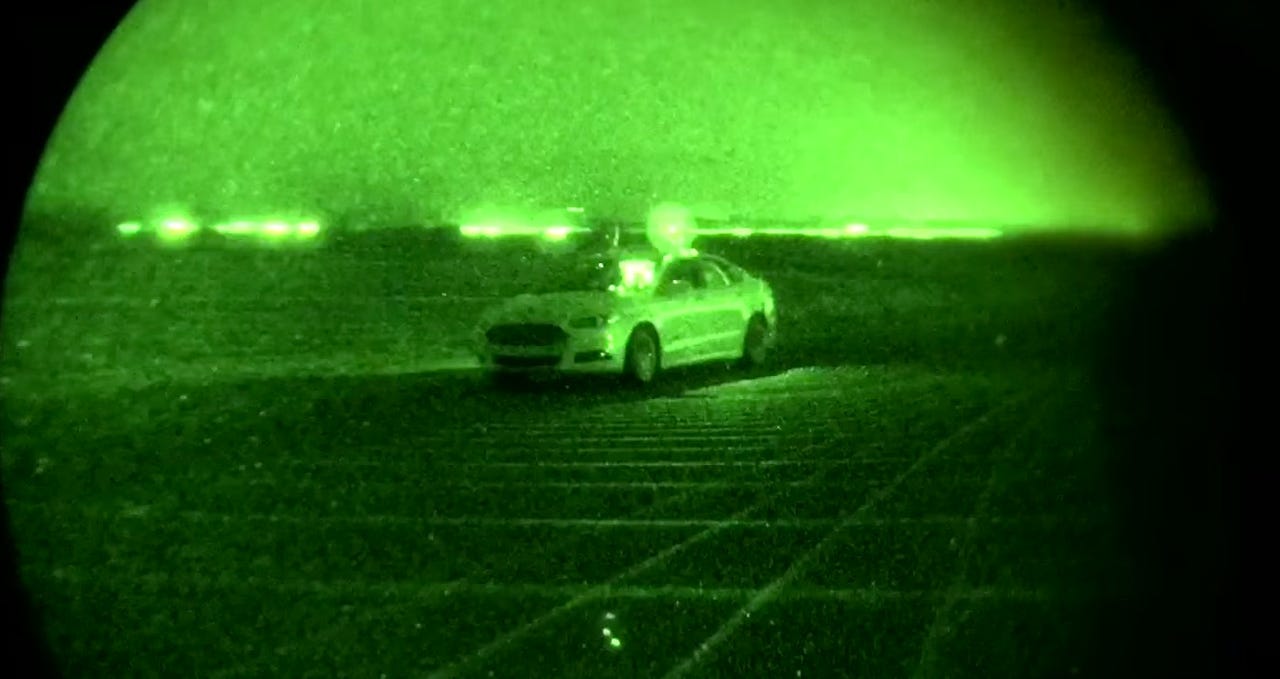Ford's autonomous car takes the fear out of driving in the dark


Ford is taking autonomous vehicle research to the next level by testing a pilot car equipped with sensors capable of driving safely in the dark.
A few years ago, Google revealed plans to develop a self-driving car. Now being tested in California -- with few accidents -- automakers and technology firms across the globe are also exploring this area as a potential future revenue earner.
Featured
Our own cars are now being equipped with rear-view cameras, cruise control and sensors which warn us when we are heading too close to obstacles, but autonomous vehicles are still a long way off.
The purpose of self-driving cars, according to Google and other firms, is to reduce human error and therefore accidents, injuries, and fatalities. However, it is not just careless daytime driving which can cause a collision -- and driving in conditions including darkness and poor weather must also be tackled if self-driving cars can live up to this promise.
Last week, Ford revealed tests focused on improving autonomous driving in a particularly common and sometimes hazardous condition -- a lack of light.
After completing tests in Arizona, the automaker says that the Fusion Hybrid model is able to perform "beyond the limits of human drivers" and drive more safely than people in the dark.
Ford's self-driving cars rely on three types of sensors to detect road lines, obstacles and keep track of its position -- radar, cameras and LiDAR, laser technology which sends out approximately 2.8 million laser pulses a second to give the vehicle full sensor capabilities no matter what external conditions are. The autonomous vehicle then uses this data to create a 3D map of its surroundings.
In testing, Ford engineers sported night-vision goggles and monitored the Fusion both in and out of the car. Driving in pitch black and without headlights, the vehicle was able to rely on LiDAR technology alone to steer around winding roads without incident.
"Thanks to LiDAR, the test cars aren't reliant on the sun shining, nor cameras detecting painted white lines on the asphalt," says Jim McBride, Ford technical leader for autonomous vehicles. "In fact, LiDAR allows autonomous cars to drive just as well in the dark as they do in the light of day."
If autonomous vehicles are ever going to be deemed safe enough to drive on standard roads and be developed commercially, these kinds of tests are crucial. For Ford, which began testing the Fusion in snow this January, current research appears to be moving apace.
The automaker says that its autonomous test fleet will be tripled in the future to 30 self-driving Fusion Hybrid sedans.
2016: The best high-end laptops for business users
Read on: Top picks
- How to increase your Bitcoin mining profit by 30 percent with less effort
- SMS Android malware roots and hijacks your device - unless you are Russian
- Bug bounties: Which companies offer researchers cash?
- Shodan: The IoT search engine privacy messenger
- What happens when you leak stolen bank data to the Dark Web?